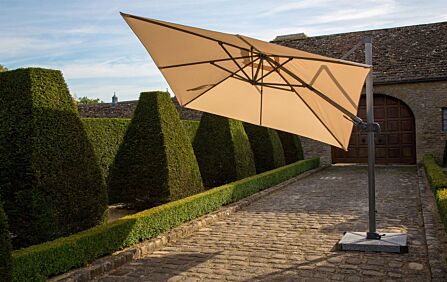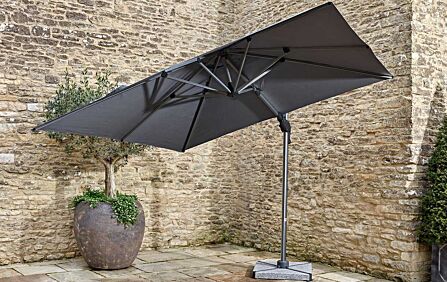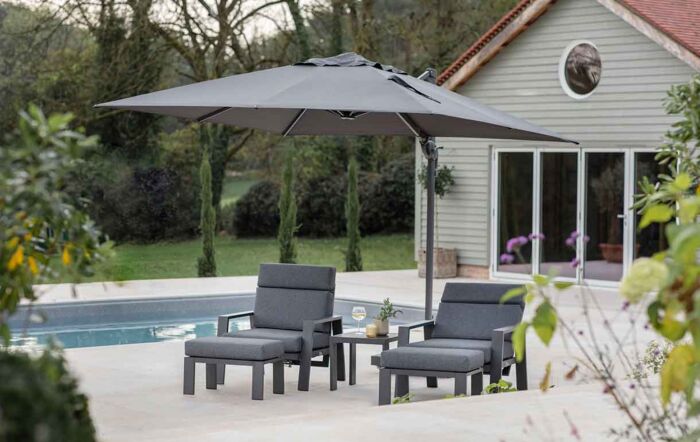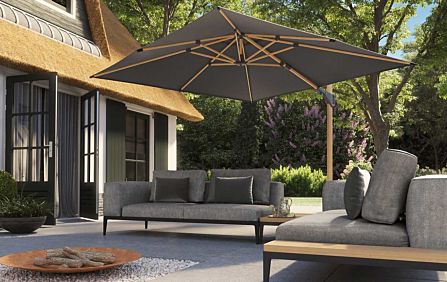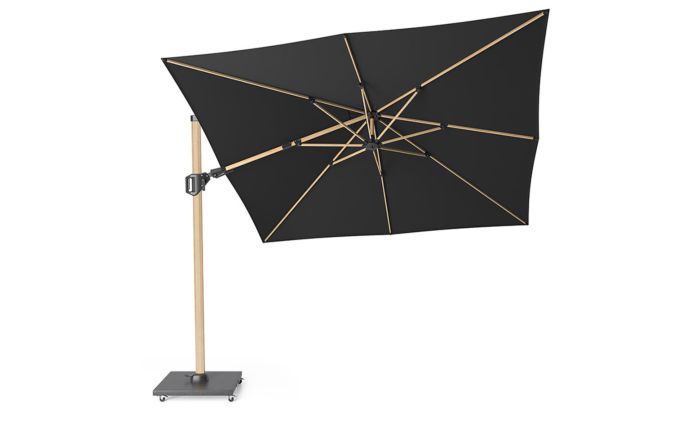How To Weigh Down A Cantilever Parasol
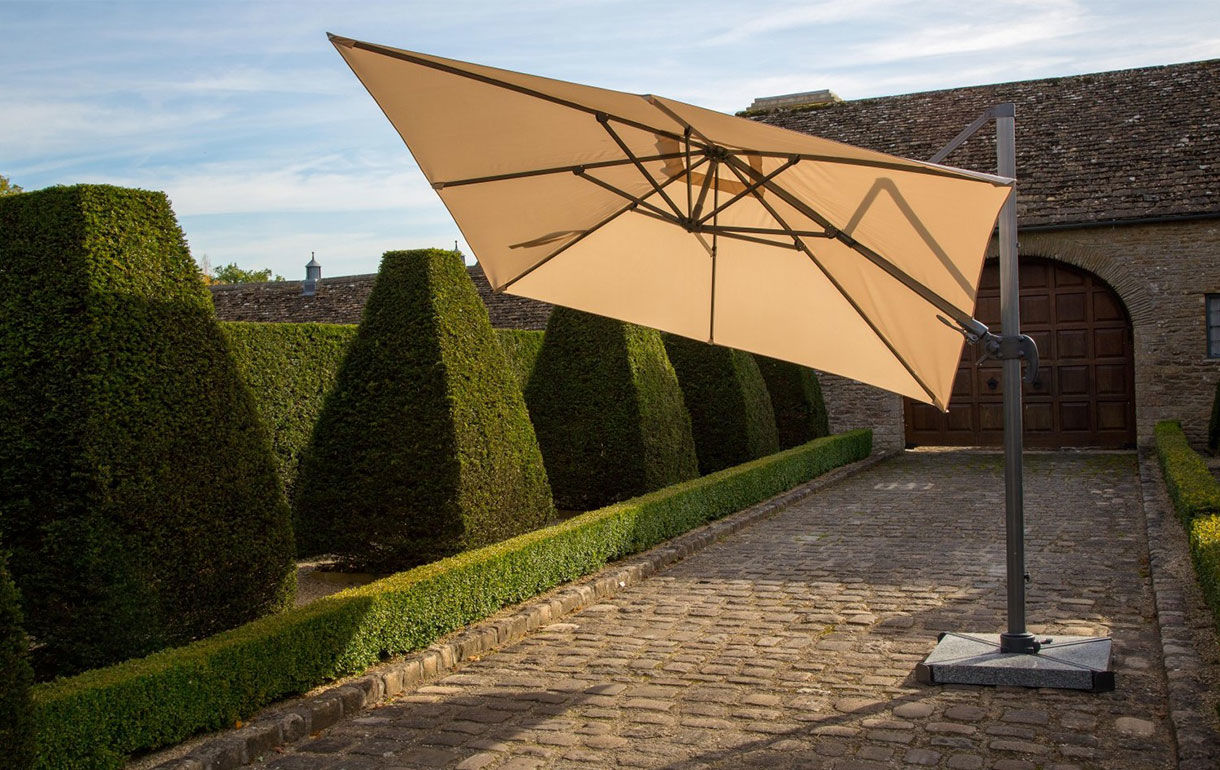
Updated: 26/02/2025
How To Weigh Down A Cantilever Parasol
How to weigh down a cantilever parasol is an important topic. Cantilever umbrellas are designed to lean. Whilst this doesn't make them more likely to fall over, this style of parasol does need some support to remain safe and to be able to do its job properly.
A cantilever parasol is a practical addition to any outdoor space but without proper support, it can become unstable. In this blog we will take a look at what you need to do to ensure that your parasol remains secure and standing tall.
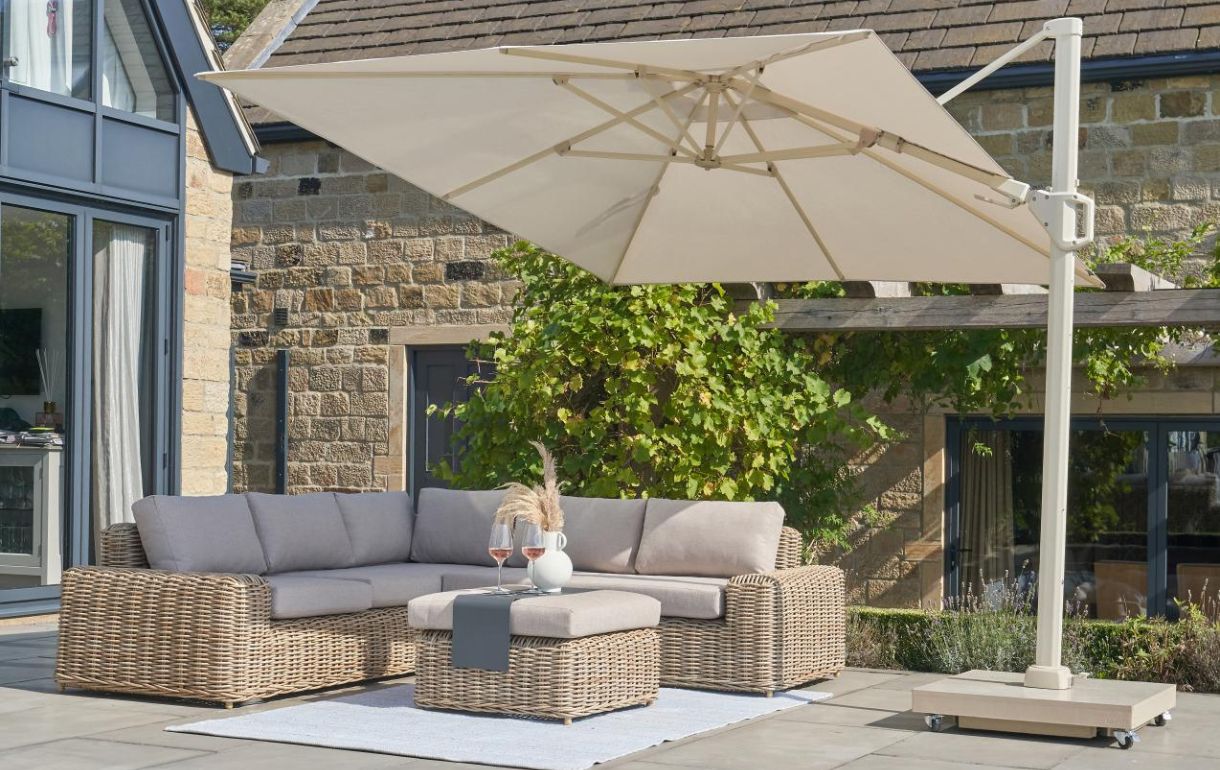
The cantilever (or offset, side-mounted, overhanging - take your pick) parasol is a great piece of kit for your outside space. It can shade a large area, while its architectural styling will definitely enhance your space.
So, if you're thinking about buying a cantilever parasol we're keen to share our advice on keeping it secure. After all, we know a thing or two about parasols!
Where should you put your cantilever umbrella?
Before you look at the detail of securing your cantilever umbrella, it's important you decide where you're going to put it in the first place. The smart answer to that question is wherever you need the shade! Frankly, this isn't always immediately obvious, especially if you've just moved in and don't know your way around your garden just yet. For a start, choosing between a 2.7m or 3m parasol might be quite significant in terms of appearance and achieving exactly the right amount of shade.
We advise our customers to spend a bit of time observing how the sun affects their outdoor space, and then where they need to create shade. For example, you might already be getting some natural shade from trees, buildings and other structures. So, anywhere exposed to direct sunlight for a good period of time is where you focus your attention - and your garden parasol. It's worth remembering that a cantilever parasol can be angled to catch the sun. Some will even turn 3600 and chase it around the garden!
If you want your parasol to more or less stay put, an appropriately weighted base will secure it in all but the windiest conditions. Or, for a more permanent option, you could bolt your parasol to your decking, patio or even the lawn. Securing it to a fence or wall works well too.
What's The Right Weight For A Parasol Base?
Many of the parasols we sell come complete with the correctly weighted base, take for example our Bramblecrest Parasols, premium quality with appropriate base weights designed to hold still in all environments. However, buying the base separately is just as easy to get right. The calculation is a straightforward weight-to-umbrella-diameter ratio of 5kg:3 metres. A parasol with a canopy measuring 3 metres across, therefore, will need approximately 50 kg of weight.
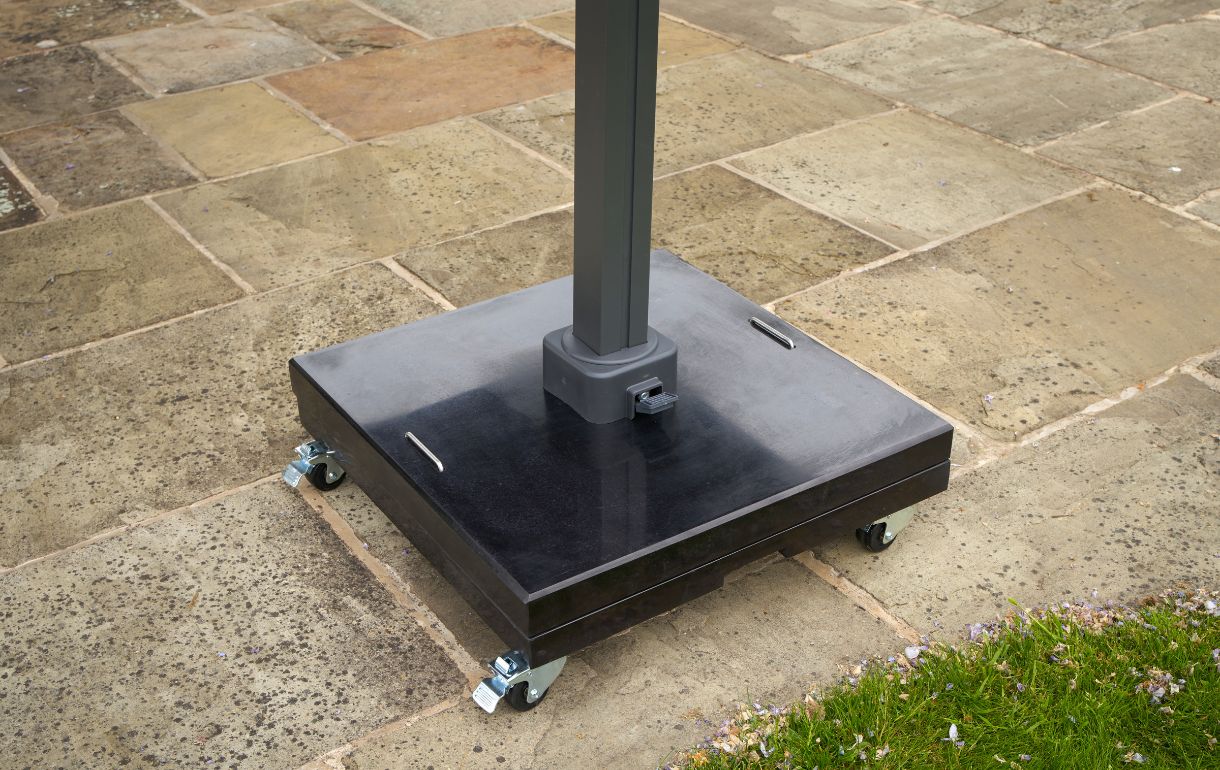
For extra security, you could add weight to the top of your parasol base. Bags of sand or concrete blocks will do a great job to help your parasol withstand windy conditions.

If you want to move your parasol to different parts of your garden, a wheeled base will enable you to reposition it (to avoid possible injury, don't move your parasol on your own).
Secure Your Cantilever Parasol Permanently In Place
For a more permanent solution, you can anchor your base by bolting it to your patio, deck or wall:
Measure and mark the exact location you need to place your anchor bolts - for wall-mounting make sure everything is level otherwise your umbrella may not open properly.
1.) Drill carefully into the pre-marked spots - be accurate otherwise one or more of your bolts won't be in the right place.
2.) Remove the dust that's gathered in the holes by blowing air into them or use a damp cloth to wipe them out.
3.) Put the base of your umbrella in place and insert the bolts to secure it.
You can choose from a standard in-ground base or an in-ground concrete base. The in-ground base can be dug into the ground and covered in soil. The hole needs to be 40x40x55cm in size, position the in-ground base in said hole and half fill with soil. Once the base is fixed in place then fill up the rest of the hole with soil.
Whereas the in-ground concrete base is only compatible with concrete, the concrete will need to be cured in accordance with the instructions on the concrete packaging. You will need to dig a hole measuring 40x40x45cm in size and fill it with 150kg of concrete mortar.
How To Stop A Cantilever Umbrella From Swaying And Spinning
Your cantilever umbrella will sway, especially if it's windy. But this isn't necessarily an issue. So long as you have the correctly weighted base, your parasol will be stable in most light winds.
At some point, your cantilever umbrella is likely to spin. If yours doesn't have a mechanism to prevent this, it's still easy to solve:
1.) Find some rope or bungee cords
2.) Wrap one end round the umbrella pole and attach the other to the top end
3.) Tie the opposite end of the second cord to a support beam in the umbrella canopy. The tension should put a stop to it spinning.
In extreme weather, however, you must be prepared to close the canopy because the spinning and swaying may eventually cause your garden umbrella to topple.
When you notice your parasol swaying it’s only natural to be concerned. However, this is completely normal your parasol has to sway slightly to counteract the breeze. If the parasol did not sway in the breeze it would fall over.
A Suitably Weighted Cantilever Parasol Offers Peace And Shade
Cantilever umbrellas are a great addition to any outside space, providing superb shade with effortless style. Once you've worked out where to position it, how to weigh it down is easy to solve. The right base or fixed installation will keep your parasol secure even in breezy conditions. If you want to be able to move your parasol around your garden then a wheeled base is the one for you. However, if you would like your parasol in one position at all times then consider the method discussed earlier and bolt the parasol down.
Unlike centre pole parasols, cantilever parasols offer maximum flexibility. They allow you to position your parasol exactly where you want without the obstruction of a central support.
Ready to find the perfect cantilever parasol for your space? Explore our collection at Just Parasols and keep your outdoor area stylish and shaded!
Further Reading:
About the Author

Dave Sadler is a garden parasol expert with a passion for outdoor elegance and functional design. With years of experience in the garden furniture and parasol industry, he’s become a go-to expert on all things parasols - from choosing the perfect shade solution to seasonal styling tips.










